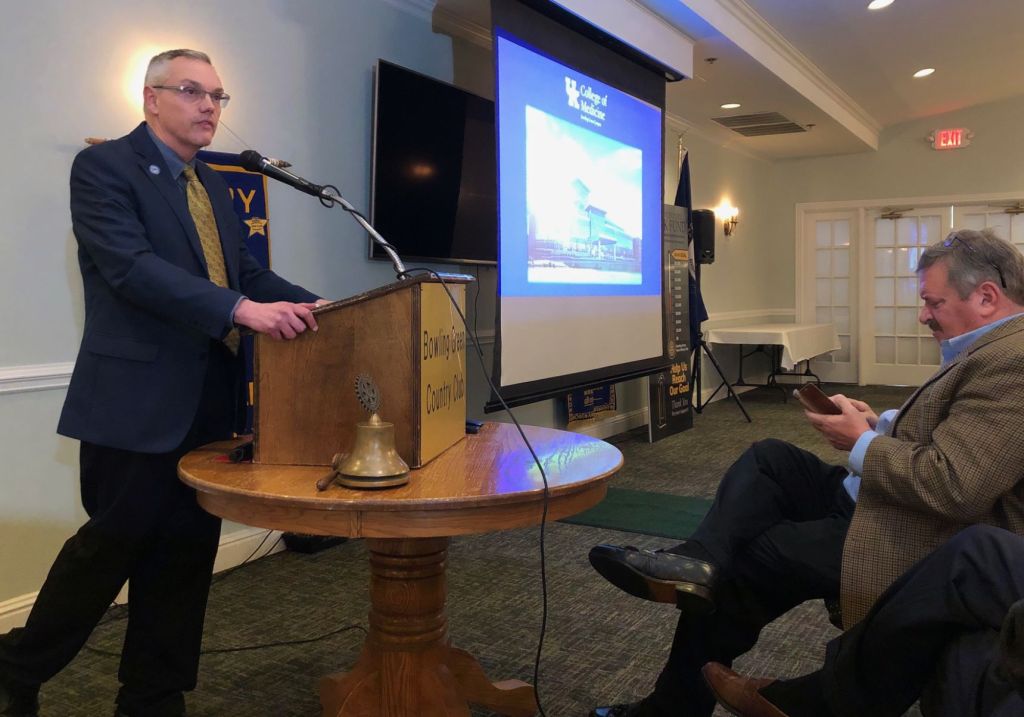Med school leader: ‘We’re on track’ in addressing doctor shortage
Published 7:45 am Thursday, March 12, 2020

- Dr. Todd Cheever, associate dean of the University of Kentucky College of Medicine-Bowling Green Campus, speaks Wednesday to the Bowling Green Rotary Club.
On the day Western Kentucky University announced its transition to an “alternate delivery” of instruction as a strategy to head off potential spread of the coronavirus, a leader of the WKU-affiliated medical college in Bowling Green gave assurances the school is on target with its mission of producing the very physicians who can help deal with such outbreaks.
“My passion is creating physicians for the state of Kentucky,” said Dr. Todd Cheever, associate dean of the University of Kentucky College of Medicine-Bowling Green Campus, in a speech at a Bowling Green Rotary Club meeting at Bowling Green Country Club. “I believe we’re on track.”
The local medical school, which has enrolled two classes of 30 students each since its opening in the fall of 2018, is part of a UK College of Medicine strategy to address a statewide physician shortage.
Association of American Medical Colleges data show Kentucky in the bottom third of states in its ranking of physicians per capita. Kentucky has 229 physicians per 100,000 residents, according to the AAMC data. That’s well below the U.S. Department of Health and Human Services recommendation of 291, but Cheever says the growth in UK’s medical-training facilities will help change Kentucky’s numbers.
With medical schools at UK’s main campus in Lexington and at WKU, Morehead State University and Northern Kentucky University, the UK College of Medicine can now accept about 200 medical students per year.
“Total medical school enrollment will reach 800 when we have four full years at WKU and Northern Kentucky,” Cheever said. “We need these young doctors to practice all over the state.”
Cheever pointed out that the need for physicians is particularly great in Kentucky, a state that ranks high in rates of cancer, smoking, obesity and diabetes.
The $28 million medical school in Bowling Green, built by Med Center Health in partnership with UK and WKU, hasn’t produced any graduates yet, but Cheever says the process of selecting students will help ensure many of the newly minted doctors pursue careers in the Bluegrass State.
Displaying a map showing where the Bowling Green medical school’s students come from, Cheever said: “Most of our applicants come from the Interstate 65 corridor and west. We’re meeting our mission and finding students from Kentucky who will serve rural communities.
“Our graduates can practice wherever they want, but they shadow doctors in their home communities. We want them to go home and practice.”
And home, for the vast majority of the local medical school’s students, is a Kentucky county.
“We’re charged with bringing in mostly Kentuckians or those with Kentucky ties,” Cheever said. “Our mission is to provide physicians for this region.”



